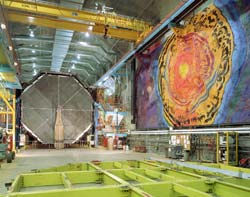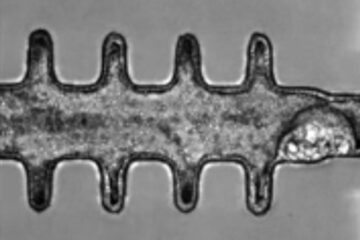Latest News

Weather extremes shed light on prairie’s past and environment’s future
Highway travelers view much of the Midwest as little more than barren flatlands. The formation of the region and its rich soils, especially tall grass areas that seemingly should support diverse forests, however, have long fascinated scientists. Newly available, long-term climate data now say the area is the product of weather extremes.
Compared with adjacent regions, the tall-grass area of the plains endures more frequent periods of severe drought, more lightning strikes and subsequent fir

Microbe From Depths Takes Life to Hottest Known Limit
It may be small, its habitat harsh, but a newly discovered single-celled microbe leads the hottest existence known to science. Its discoverers have preliminarily named the roughly micronwide speck “Strain 121” for the top temperature at which it survives: 121 degrees Celsius, or about 250 degrees Fahrenheit. Announcing Strain 121’s record-breaking ability to take the heat in the August 15 issue of the journal Science, researchers Derek Lovley and Kazem Kashefi write, “The upper

MINOS detector ready to take first data
Today, (August 14th), sees the start of data collection on the Main Injector Neutrino Oscillation Search (MINOS) detector, situated in the Soudan iron mine, Minnesota, USA. UK particle physicists, working within an international collaboration, will use the MINOS detector to investigate the phenomenon of neutrino mass – a puzzle that goes to the heart of our understanding of the Universe.
Neutrinos are pointlike, abundant particles with very little mass. They exist in three types or ‘flavour

Scientists at The Scripps Research Institute Create New Strain of Yeast with 21-Amino Acid Genetic Code
A New Tool for Biology and Medicine
La Jolla, CA. August 14, 2003—Henry Ford revolutionized personal transportation by introducing an unusual car design onto the auto market and by embracing factory mass production of his “Tin Lizzie.”
Now a team of investigators at The Scripps Research Institute (TSRI) and its Skaggs Institute for Chemical Biology in La Jolla, California is introducing revolutionary changes into the genetic code of organisms like yeast that allow these cel

Nitrous oxide record sheds light on glacial carbon dioxide
A 106,000-year-long record of nitrous oxide concentrations and a shorter record of nitrogen and oxygen isotopes show that both marine and terrestrial nitrous oxide production increased in unison and effectively by the same proportional amount during the end of the last glacial period, according to Penn State researchers.
Equal terrestrial and marine production of nitrous oxide also suggest that increased storage of carbon in the oceans was not the cause of low atmospheric carbon dioxide dur

Researchers close in on scientific definition of arousal
For scientists in the field of neurobiology, defining the factors that influence the arousal of brain and behavior is a “Holy Grail.” Research published by Rockefeller University scientists in the Aug. 11 issue of Proceedings of the National Academy of Sciences Early Edition are the first to give a rigorous definition of what is meant by arousal, considered to be at the base of all emotionally laden behaviors. In particular, the researchers, led by Donald W. Pfaff, Ph.D., provide an operational defi











